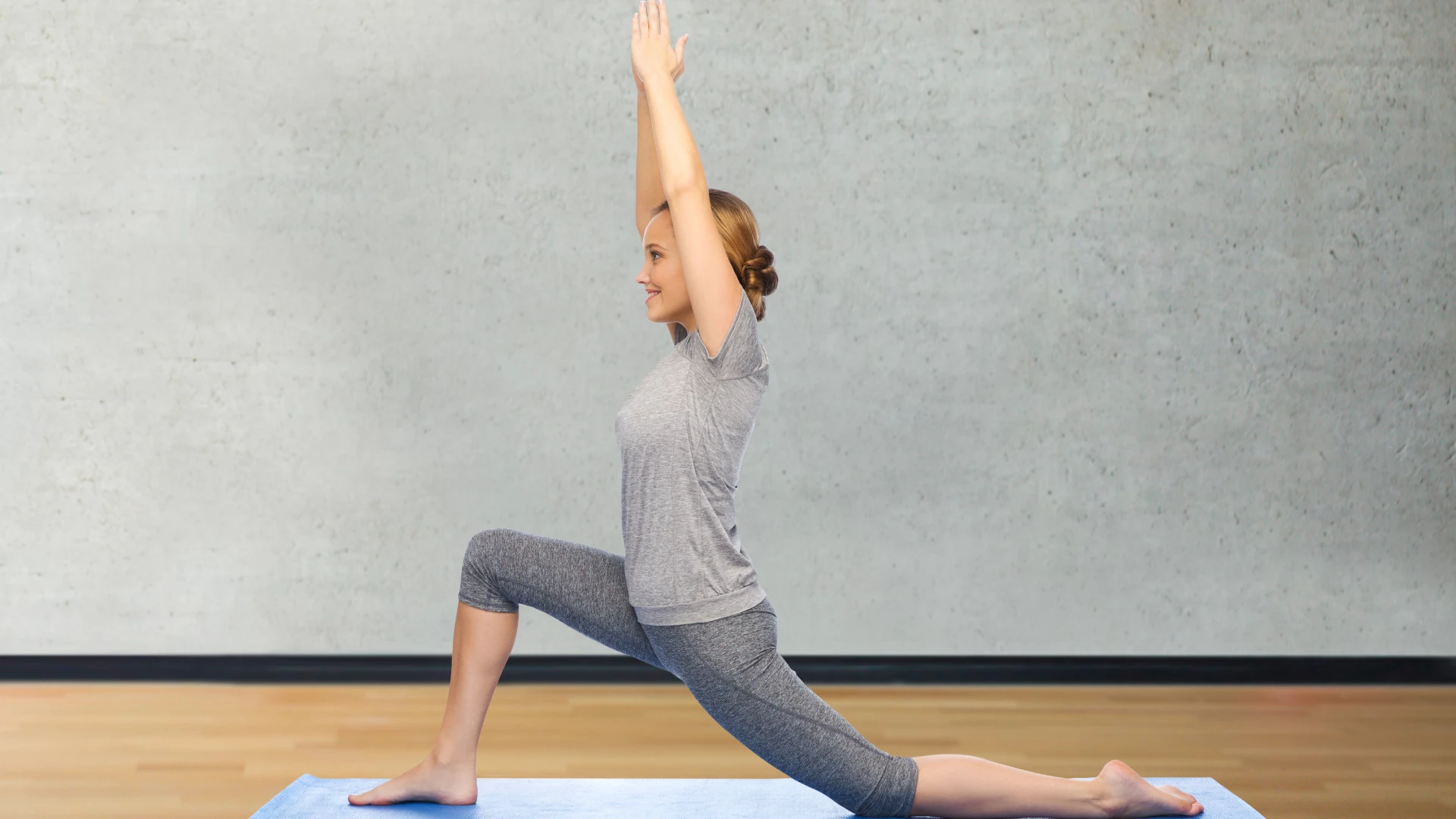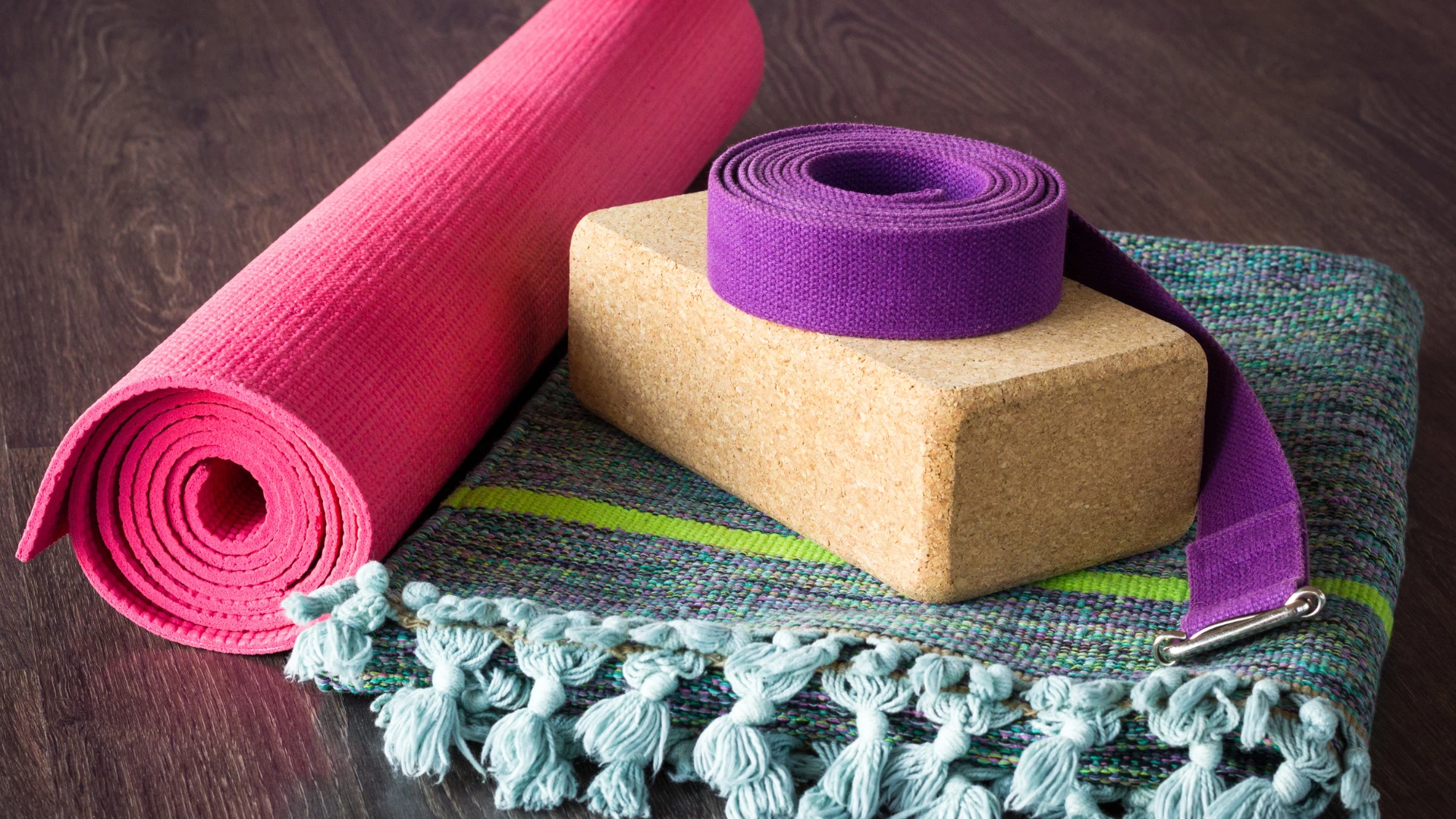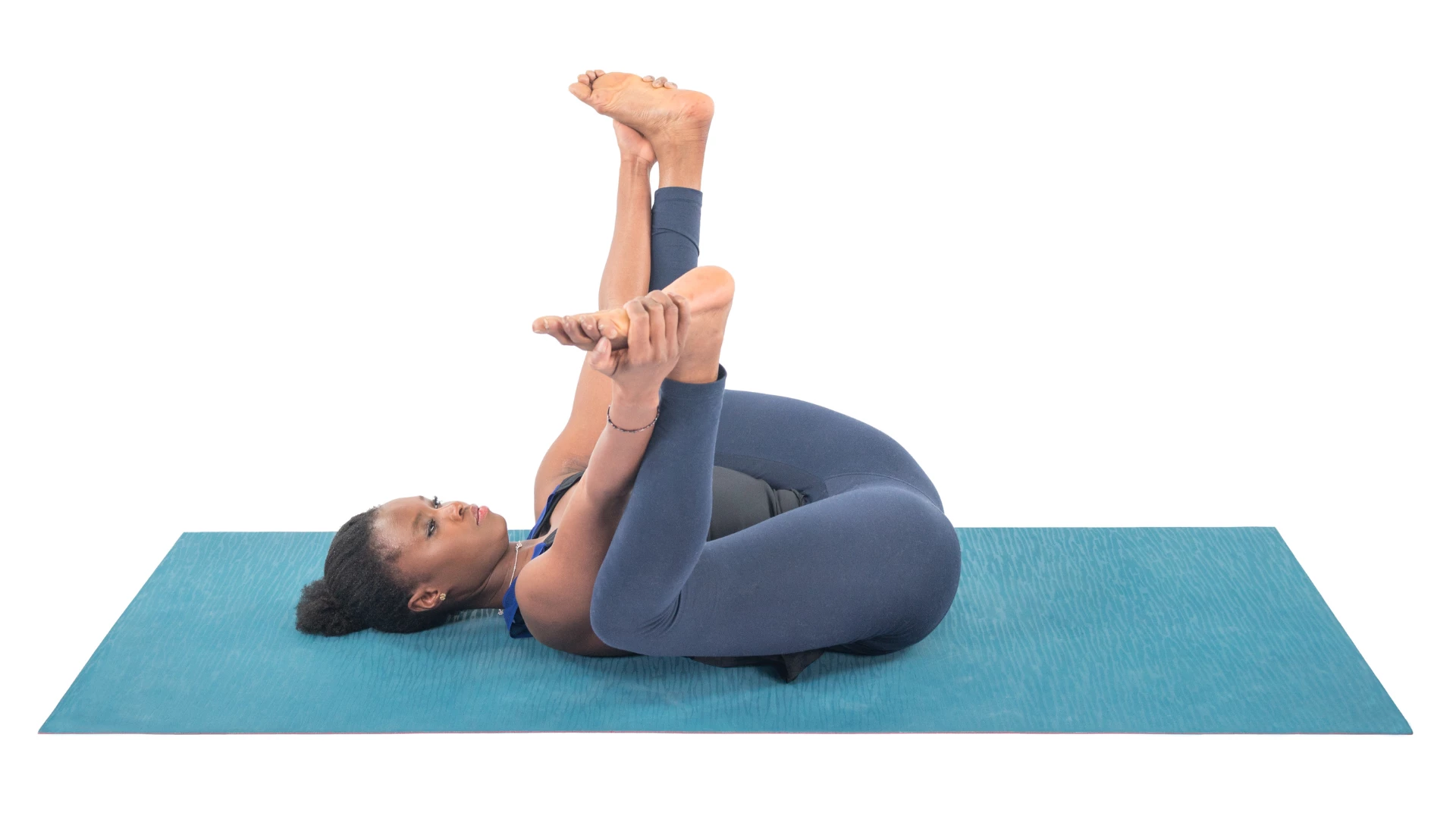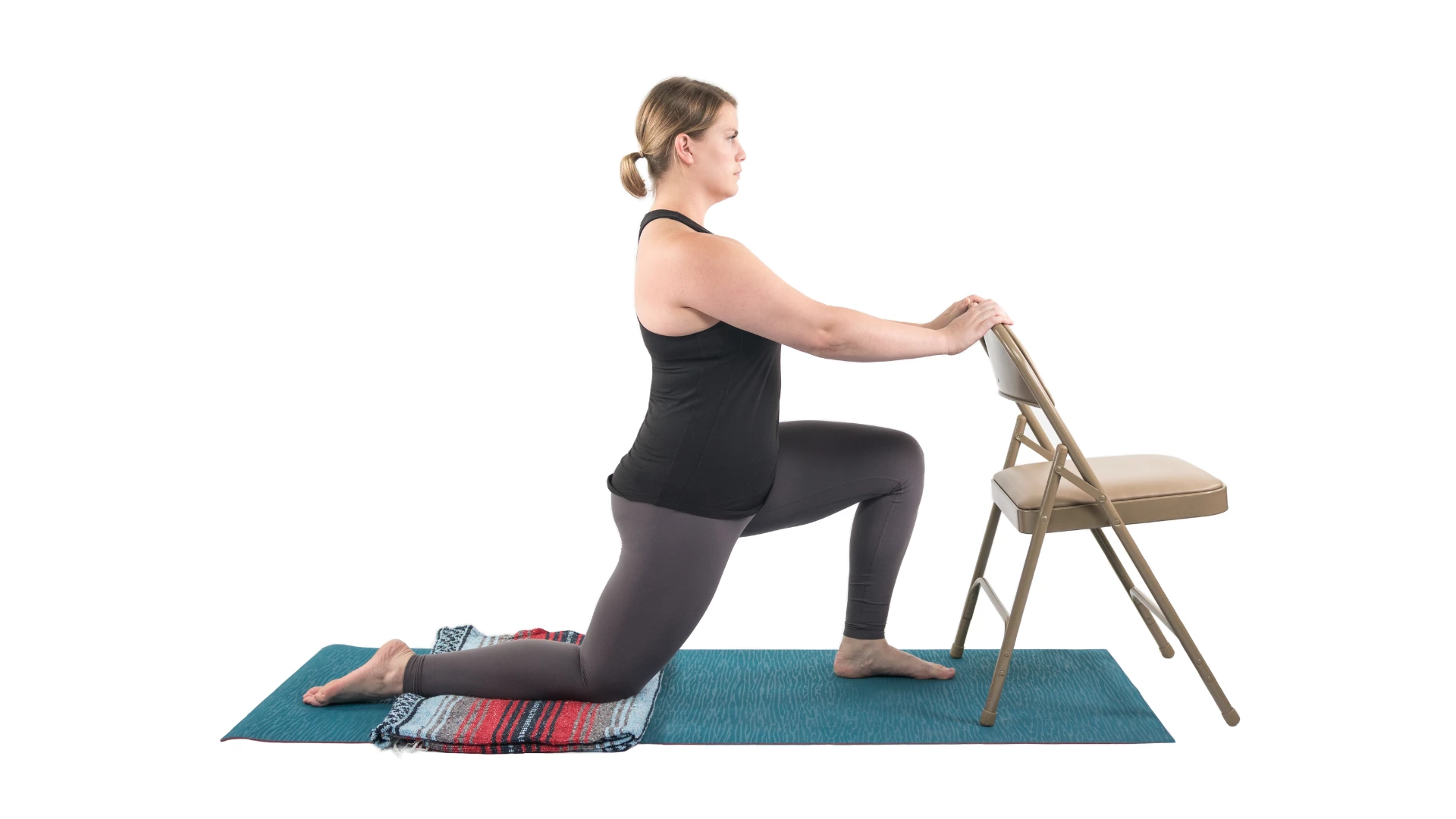Keys to Safe Hip Opening: 3 Yoga Poses For Happy Hips

Article At A Glance
Stretching and opening the hips must be tempered with muscular engagement for stability. Learn more about our top 3 hip-opening yoga poses. Hip, Hip, Hooray!
When a teacher asks the class, “Any requests today?”, students often say, “Hip-openers!” As Dr. Ginger Garner, a PT and yoga therapist, noted, “Hip-opening is not universally beneficial. Hip-opening can even lead to injuries if overdone or done with incorrect alignment.” Students love hip-openers in classes because these yoga postures address tight muscles at the same time as being soothing and relaxing. However, some of us hang out in hip stretches and may not know how to stabilize muscles around our joints.
Patanjali’s yoga sutra 2:16 states, “Heyam dukham anagatam.” As translated by Edwin Bryant, this means, “Suffering that has yet to manifest is to be avoided.” If we approach our asana practice with clarity and curiosity, we can keep our joints healthy as we age.
The pelvis is a dense, bony structure built to be stable for weight distribution. Sthira and Sukha, stability and good space (YS 2:46) ideally come into balance at the hips so that there is structural integrity and healthy mobility in our bodies so we can move through our daily activities with ease.
Our legs meet the pelvis at the mobile hip joints so our legs can move us about the world. Since legs have a front, back, inner, and outer, many postures can be considered to “open” or stretch the hips: standing poses, back bends, forward bends, wide-legged poses, reclining poses, and seated poses. While one might think of hip opening as passively stretching the outer hip and buttocks, there are many active hip opening poses, such as Vira 2 and Triangle Pose.
Pros & Cons of Hip-Openers in Yoga Practice
Hip-opening yoga poses can help release tension in the hips and lower back and improve mobility. However, if practiced incorrectly or aggressively, hip-openers can stress the hip joint instead. This stress can lead to labral tears (the soft tissue cushions the hip socket), impingement (which can set the stage for osteoarthritis), or other hip, low back, or knee injuries. In addition, hypermobile practitioners may seek out the sensation of a deep stretch in a hip-opening pose and may go too far, over-stretching their ligaments, which are meant to stay taut and, once over-stretched, can create instability.
Principles and Cautions for Safe Hip-Opening in Yoga

To practice safely, it’s important to follow some basic principles.
- First, avoid pushing yourself into yoga poses. Instead, find a comfortable place where you feel a stretch without pain.
- Second, be mindful of your alignment in hip-opening poses. For example, we recommend students keep their knees and toes pointing in the same direction to avoid torquing the knee.
- Modify poses using yoga props such as blocks, blankets, or straps to ensure a balance of steadiness and ease.
- Finally, to avoid overstretching, especially for very mobile bodies, learn to contract your outer hip into your midline for stability.
3 Yoga Poses to Practice for Safe Hip-Opening
1. Happy Baby Pose (Ananda Balasana): Stretch Inner Thighs and Hips
 This yoga pose stretches the inner thighs and hips while releasing tension in the lower back.
This yoga pose stretches the inner thighs and hips while releasing tension in the lower back.
To practice the Happy Baby Pose:
- Recline on your back and bend your legs towards your chest.
- Keep your trunk steady on the floor as you bring your knees toward your armpits.
- In slow motion, kick your heels away from your buttocks until the shins are perpendicular to the floor. Then, catch the outsides of your feet, ankles, or shins.
- It will look like you are balancing the ceiling on the soles of your feet. Relax your shoulders away from your neck.
- Hold the pose for several gentle breaths, then release the legs back together and place each foot down on the floor.
2. Low Lunge (Anjaneyasana): Target the Hip Flexors

This yoga pose targets the hip flexors, which can become tight from sitting. Be mindful not to sink the weight of your pelvis into the delicate tissue of your groin. While stretching, create tone.
Here’s how to practice a stabilizing Low Lunge to open the fronts of the thighs:
- Place two blocks at the front of your mat.
- Start on your hands and knees in a tabletop position; place your hands on the blocks.
- Step your right foot between them.
- Slide your left thigh back a few inches and curl your toes into the mat.
- Keeping your knee on the mat (or a folded blanket for cushion), press the ball of your back foot into the floor as you stretch the heel away from the back of your knee. Sustain those actions as you move your hips any amount forward.
- Press your front heel down into the mat. Then, aim the stretch into the front of your back thigh.
- Hold the pose for several breaths before returning to hands and knees.
- Switch sides.
3. Warrior II Pose (Virabhadrasana II): Focus on Hamstrings and Quads
![]()
This yoga posture stretches the hips, hamstrings, and quadriceps and is one of our favorite hip-opening yoga poses.
To practice Warrior ll:
- Stand facing the long edge of your mat.
- Step your feet about 3-4 feet apart.
- Turn your left heel out a bit wider than the baby toe.
- Rotate your entire right leg out 90 degrees, allowing the pelvis to rotate slightly in that same direction (in other words, to protect your right knee and your SI joints, do not demand your pelvis stays facing the long edge of the mat).
- Align your right heel with your left arch.
- Firm your right buttock muscles to sustain the rotation of your right hip as you bend the leg until your shin is perpendicular to the floor. Classically, the thigh will be parallel to the floor. However, stacking the knee directly over the heel is more important than bending the leg more deeply. If you can maintain the muscular actions, feel free to inch your left foot further away from the right until the right shin is perpendicular and the thigh parallel to the floor.
- Press your left foot firmly into the floor as you aim your bent leg to point toward the baby toe side of your foot.
- Lift your trunk as you settle your pelvis between your legs.
- Spread your arms wide to the sides. Keep your lungs and abdomen facing the wide edge of your mat even though your pelvis is slightly rotated to the right to protect your knee while you stretch the inner thigh.
- Hold the yoga pose for several breaths.
- To exit the posture, press both feet into the floor and mindfully straighten your right leg by engaging your quadriceps.
- Turn your feet parallel.
- Pause.
- Switch sides.
These hip-opening yoga poses can improve flexibility and relieve hip and lower back tension if you practice them mindfully and balance the movement of stretching with actions that create stability.
Also, read...
Related courses
Exploring the Stages of Being: The Yoga of Inner Peace
Livestream with Ellen Saltonstall: Yoga for Bone Health, Strength and Balance

Sarah Bell (ERYT-500, YACEP) has been teaching yoga for more than twenty-five years. She was on the faculty of the Yoga Works Teacher Training Program for fifteen years, having trained hundreds of teachers in both the 200-hour Introductory Courses and the 300-hour Professional Programs throughout the country and abroad. She is the creator of Speaking of Yoga, a voice and communication course for yoga teachers, as well as Beyond the Postures, a course that introduces yoga philosophy, anatomy, pranayama, and meditation to curious yoga practitioners. She mentors yoga teachers along the path as they find their voice and refine their skills. For more information on her upcoming retreats, courses, and classes, find her at www.sarahbellyoga.com
